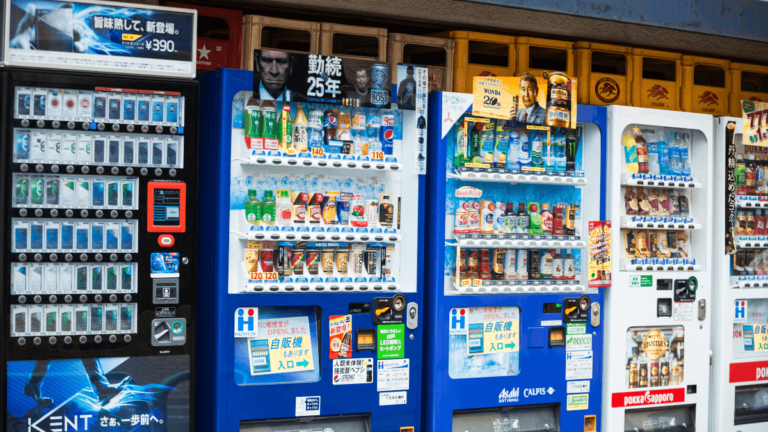Did A Vending Machine Overcharge You? 2 Possible Reasons
Buying from a vending machine is usually a quick and convenient way to grab a snack or quench your thirst.
Sometimes, however, the experience can turn frustrating when you pay for the item(s) only to find out that you were overcharged!
You have every right to be upset and confused about this, even more so since vending machines can’t explain their actions.
So, would a vending machine overcharge? If so, why?
A vending machine may overcharge you on card payments due to – Extra processing fees, Authorization hold until the original amount of money is deducted from your account.
Another reason could be you didn’t end the process when you used your card to pay and someone used the machine right after you.
Today, we’re discussing the possible reasons a vending machine may overcharge and what you can do to avoid them.
RELATED READ: Vending Machine License Australia: Criteria & Requirements
Do Vending Machines Overcharge?
Yes, a vending machine can charge you more than the total price indicated for the item(s) you selected to buy. However, this usually happens with card payments more than app payments and never with cash payments.
Even so, there are reasons that can explain why you were overcharged after paying using a credit or debit card. It’s mostly got to do with banking fees and practices, not something the vending machine company intends on doing just because it can.
It could also be that you forgot to hit “End Process” after you paid with your credit or debit card. This can cause overcharging on your account due to interference with another customer’s purchase.
Why Do Vending Machines Overcharge?
Now, let’s explain in more detail the 3 most common reasons behind a vending machine overcharging you.
1. Extra Processing Fees
If you buy from a vending machine using a credit or debit, you may be charged an extra amount due to processing fees. This can happen with any vending machine -not a particular brand or type- because the processing fees are something related to how banks manage card payments.
Banks typically set processing fees for payments done via credit or debit cards to cover the procedures and time required to complete the transaction. Merchants need to pay these fees, so they often end up including part or all of the additional fees in the customer’s total to avoid having to pay them alone since they didn’t ask you to pay with a card in the first place.
This commonly happens in many restaurants and retail shops when you pay with a card. You’ll find out sooner or later that you’ve been charged extra for processing fees.
What you can do
- Sometimes, the vending machine displays information about payment methods next to its card reader. Check that label before paying to see if it says anything about an additional fee.
- If you’re overcharged for processing, you may want to accept the fact. A lot of people don’t mind paying a little more in exchange for not having to walk around with cash. Card payments are surely less annoying than all those times a bill would get stuck or rejected because the machine deemed it “too wrinkly”.
- If you don’t want to pay the extra processing fee, you can just use cash or look for another machine that doesn’t overcharge.
2. Authorization Hold
A vending machine may overcharge when you pay using a credit or debit card because of a banking practice known as an authorization hold. This type of overcharge will appear in your statement as if you were charged the same amount twice.
The authorization hold is simply a standard procedure in banking that aims to verify payments via credit or debit cards. It works by temporarily keeping an equivalent amount to the total of the purchase money “on hold” or pending until the money from your account is transferred to the vendor.
When you’ve completed the payment process at the vending machine, your account (the one linked to the credit or debit card you used) will show that you’ve been charged the same total twice. However, you don’t need to worry — the money wasn’t actually deducted twice.
This happens because the money you should pay doesn’t leave your account immediately after the purchase. The vending machine company needs time to contact the bank and vice versa.
By maintaining the same sum of money on temporary hold twice, the bank ensures that there’ll be enough funds left to pay the vendor if you were to max out your credit or debit card before the money is actually transferred.
Once the vending machine company submits the day’s card payments and the money for the purchase is transferred out of your account, the hold will be lifted off of the equivalent amount.
What you can do
An authorization hold is typically resolved within a day or two. So all you need to do is be patient. If the hold is still up after a couple of days, contact your bank to see if there’s a problem.
Failed to End Process
The last step of paying with a credit or debit card at a vending machine is to make sure you hit the “End Process” button or option.
This step is critical to prevent people from getting items and charging them on your card, whether intentional or not.
What you can do?
Remember to end the process to avoid unauthorized transactions. In case you get charged for someone else’s items, there isn’t much you can do other than be careful the next time.
Wrap Up
If a vending machine overcharges, it may be due to processing fees that banks impose on card payments or because of an authorization hold that’ll be lifted within a couple of days.
It’s also possible you forgot to end the process after you paid with your card, then someone used the machine right after you and you were charged for their purchase by mistake.
Did you find this article helpful? If you have any queries, let us know in the comments below and we will try our best to help you out!






